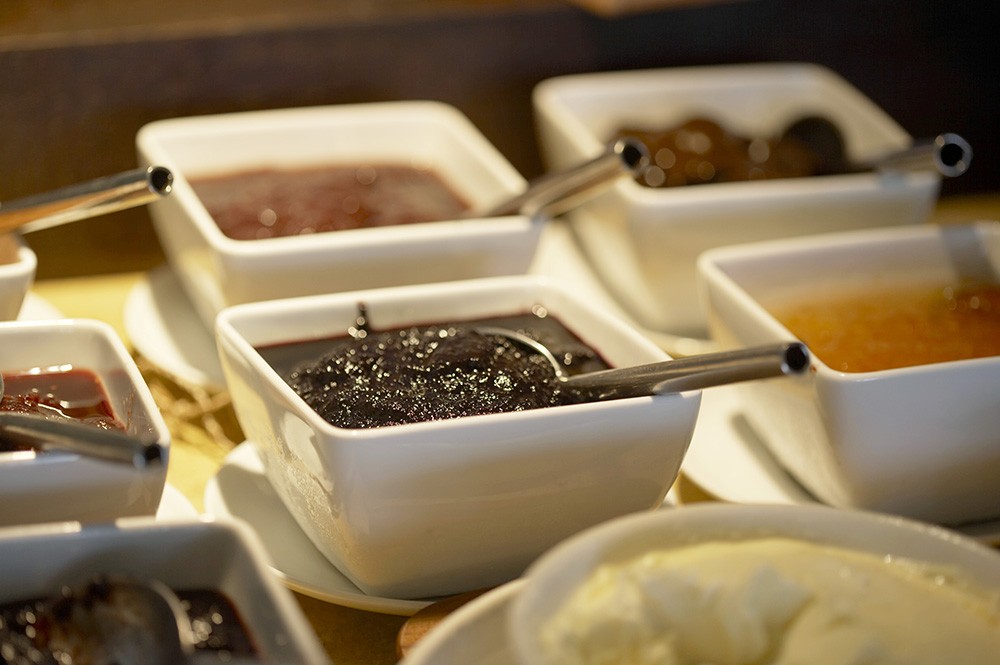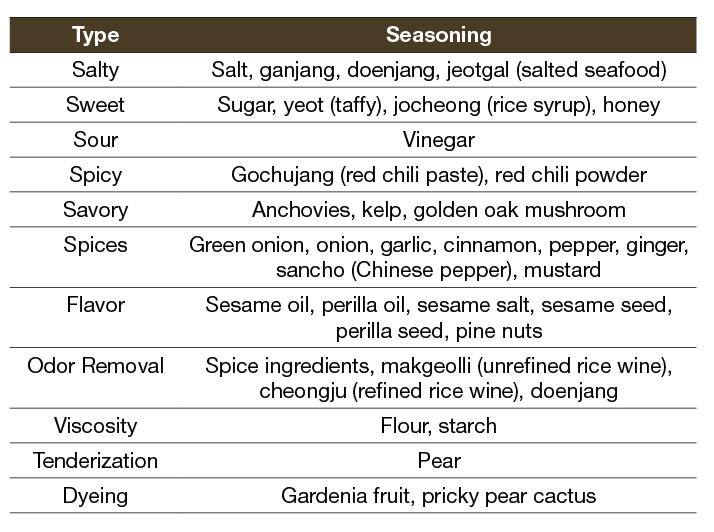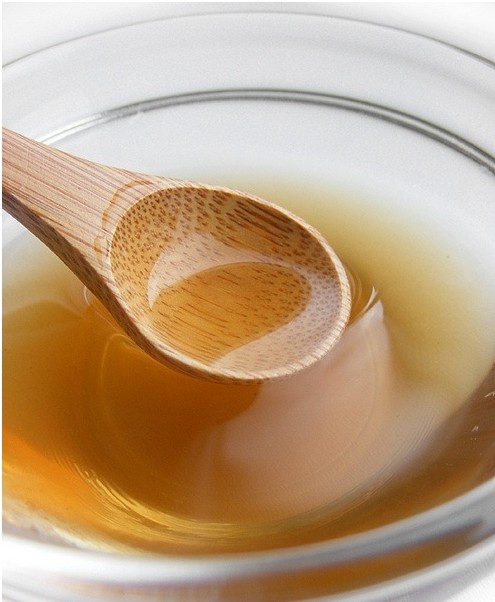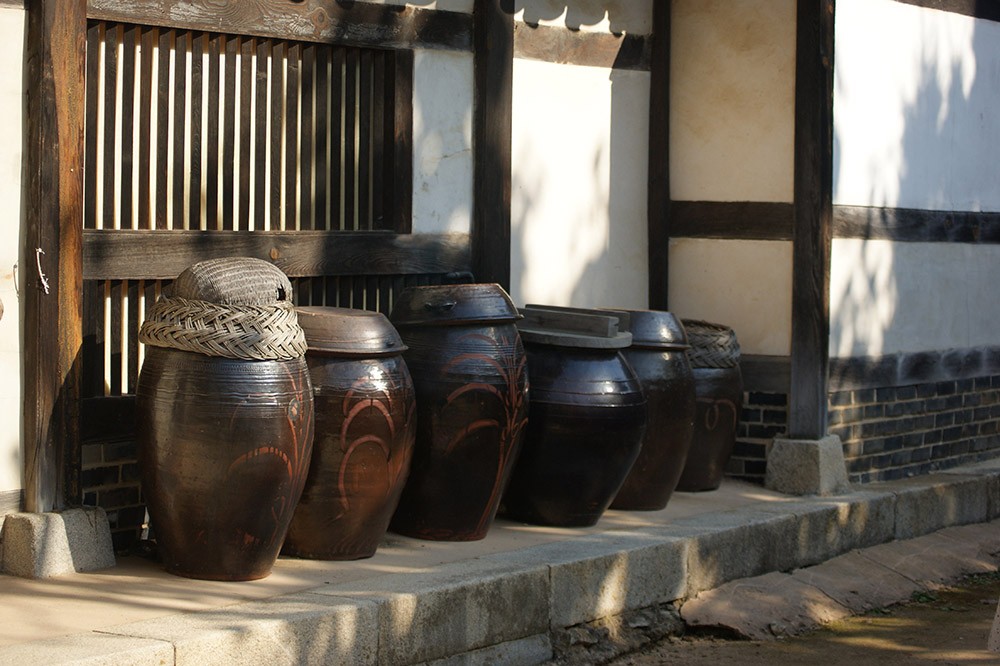한식 읽기 좋은 날
Vol 62. YANGNYEOM
Nothing Better than Korean Yangnyeom
Yangnyeom and HANSIK

Yangnyeom (seasoning) is an indispensable part of cooking. How bland would Korean dishes be without seasonings, such as salt, soy sauce, soybean paste, salted fish, anchovies, and sesame oil? This article will explore the seasonings that add a delectable flavor to Korean food that is landing on the palates of the world.
Article Noh Yunyeong (The Editorial Team) Sources <K Food: The Secret of Korean Food- 1. Korea’s Delectable Flavors> (Design House), Rural Development Administration, National Institute of Agricultural Sciences Website, Encyclopedia of Korean Culture
The world of seasoning
Humans survived by collecting and consuming food materials such as plants and animals from nature. Thus, civilizations continued to develop, and they were able to maintain this world. However, there were many cases that were difficult to consume as they were among natural food ingredients. Thus, humans not only preserved the efficacy of food through cooking, but also took care of the flavors. It is the world of “yangnyeom (seasoning)” that provided new and colorful flavors in the cooking process. Seasoning refers to all ingredients, including spices, used to enhance food flavors. When making food, various ingredients were used as “yangnyeom” to offset the unpleasant taste while preserving the good aroma and flavor of the ingredients. It is essential to remove the gaminess and fishy smell, and salt and pepper were so influential that it was recorded that they changed world history.
There are countless ingredients used as seasonings in Korean food, but the number is fewer than in the past. In 1924, during the Japanese colonial period, Lee Yonggi, a minor intellectual, published <Joseon Moossang Sinsik Yori Jebeop>, which states that “the use of seasoning is now less than before,” suggesting that the types of seasonings have decreased according to the trend of the times. Simplification and improvements in meat processing and storage methods are cited as the reasons. Seasonings traditionally used in Korean cuisine can be classified according to flavor or circumstance, and the key seasonings used currently are as follows.




Various types of Korean seasoning
Salt, which is a crystal obtained by evaporating seawater, is used for pickling food ingredients, or making jang (soy-based sauce and paste). Its use differs depending on the type. Bay salt is used for pickling kimchi or fish, kosher salt is used for seasoning, and bamboo salt or roasted salt is used for grilling seaweed. Ganjang (soy sauce) is a seasoning that has been the basis of Korean cuisine since the ancient times. It is made by fermenting soybeans, and it adds a salty flavor to food. Meju (fermented soybean lump) is soaked in salt water and strained to use as soy sauce, and there are different types of soy sauce, depending on how many years it has been soaked. Clear soy sauce aged 1 to 2 years is called cheongjang or gukganjang, and is used when making guk (soup) or seasoning greens. Jinganjang, which has a dark color and has plenty of sweet and savory flavors, is used for braised, stir-fried, grilled, and pickled dishes. Doenjang (soybean paste) is one of the traditional seasonings that have been used since the ancient times along with ganjang, which is used to season guk (soup) or jjigae (stew), making ssamjang (red chili and soybean paste), or seasoning greens. The one that is mainly used as doenjang as very little salt water is used to make it is called makjang. Gochujang (red chili paste) is a jang made spicy by mixing in rice or barley and gochugaru (red chili powder) into mejugaru (meju powder), which was created during the middle period of the Joseon Dynasty. It can remove the smell of fish, so it is often used in braised (jorim) or stewed (jjigae) fish dishes.
Sikcho (vinegar) is made by fermenting grains or fruits with acetic acid bacteria, and it stimulates appetite through its sour taste. When used in food, it acts as a preservative, removes the fishy smell, and hardens the flesh of fish. Heukcho (black vinegar) is one of the types of brewed vinegar, which is made by using rice, yeast, and natural water. It is rich in nutrients such as essential amino acids, and is called a jewel in the vinegar world.
Sugar, grain syrup, and starch syrup are seasonings that add sweetness to Korean food. Sesame seeds are used whole as roasted, or finely grounded to be used as sesame salt. Perilla seeds are roasted and used as is or ground and added to sundaeguk (blood sausage soup), sujebi (hand-pulled dough soup), steamed dishes, stews, and seasoned greens to add nuttiness. Sesame oil and perilla oil are also representative seasonings. Sesame oil made by roasting and pressing the seeds has a strong nutty flavor and aroma, and gives a smooth and soft texture. Perilla oil has a unique aroma, and is mainly used when seasoning or stir-frying wild greens. In addition to red chili paste, there are red chili powder, black pepper powder, and mustard juice that give spiciness. They reduce the smell of fish or meat, and stimulate the appetite for a unique flavor. If you mince or juice ginger, it gets rid of the gamey smell of pork, so it's good for pork dishes. Mixing the seasoning properly according to the ingredients and recipe and adding the right amount, rather than adding so much of it, can enhance the food’s flavor. Moreover, many other ingredients, such as pine nut powder, green onion, garlic, and ginger, are used as seasonings in Korean cuisine.

Seasonings to enhance the taste and flavor of a dish
Foreigners often feel that Korean food is spicy. This is probably because many Korean dishes are based on red chili powder and red chili paste, and use spicy ingredients such as garlic, green onion, and ginger. However, Korean seasoning makes the food very harmonious. Korean seasonings, such as gochujang and doenjang, go together with other ingredients to present the flavor of matured harmony. Thus, though some dishes are spicy, they are less irritating than other Western foods.
According to <Aeongakbi>, the etymological research book written by Jeong Yak-yong, a representative intellectual of the 18th century Joseon Dynasty, yangnyeom is described as “a thing that captivates the flavor by pounding spicy seasonings, such as ginger and garlic.” This implies that the old seasoning was also spicy. However, seasoning at the time was difficult to eat unless you were a nobleman or a rich man. At the time, seasonings such as ginger and pepper were a symbol of wealth, and were called “medicines.” <Aeongakbi> states that seasoning made with various spicy ingredients is called “yakryeom” in Korea, which contains the idea that seasoning is good medicine for the body. In fact, it is said that in the past, seasonings were often used as medicines in both the East and the West.
At the time, pepper, which was expensive and dependent on imports, was replaced by chili pepper, which was not originally edible. The seasoning gradually became popular, and more common people were able to consume it. In this process, a Korean seasoning culture centered on red chili powder was naturally formed.
However, spiciness is only part of it. The world of hansik yangnyeom (Korean seasoning) is deep and extensive. It provides saltiness, sweetness, savory flavor, adds richness, and removes fish smell, so what can be better than this? It is easy to regard yangnyeom as an element that harms the original flavor of ingredients. However, seasoning in Korean food has evolved to be more suitable for humans while preserving the value of the ingredients. And this will not change in the future.










